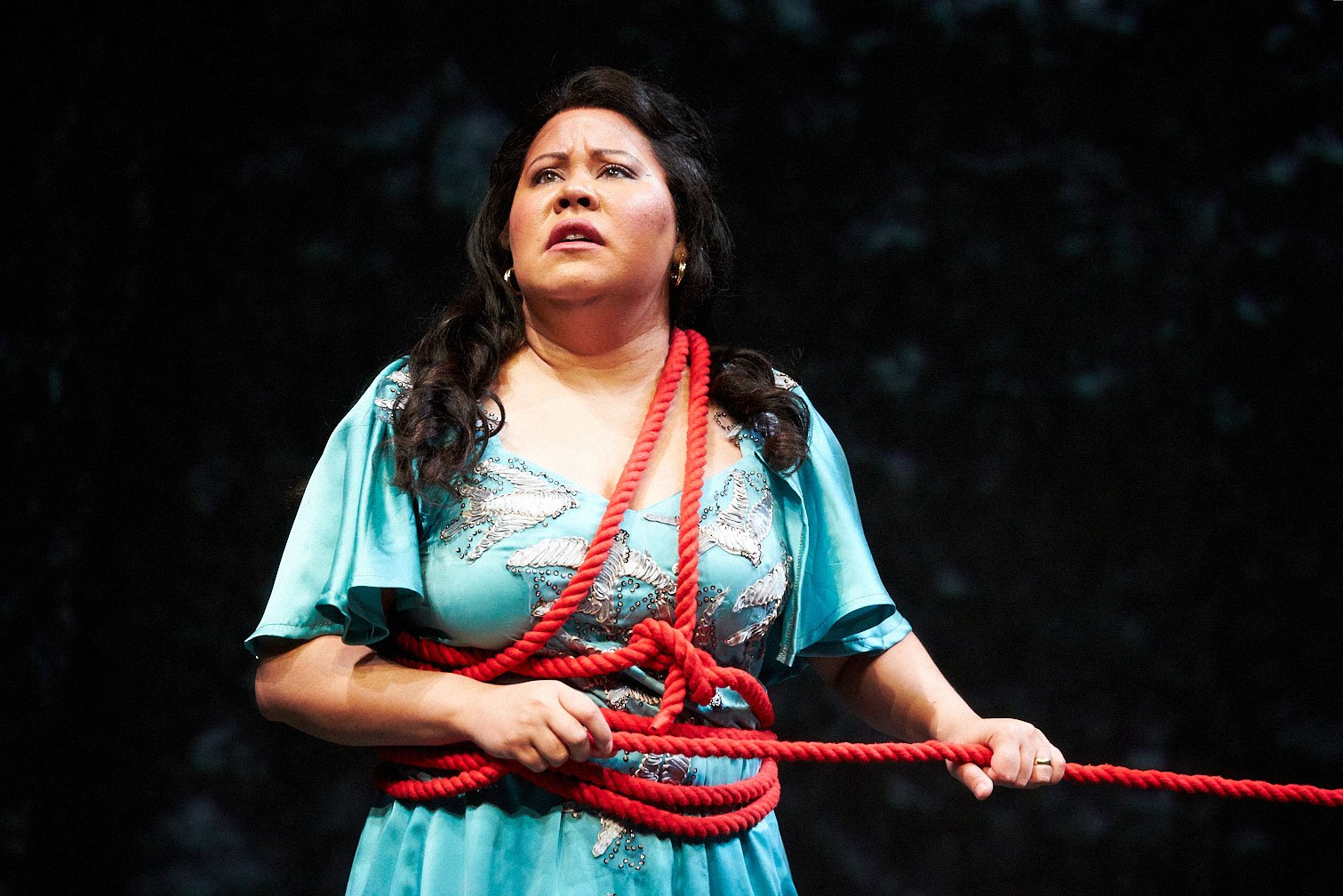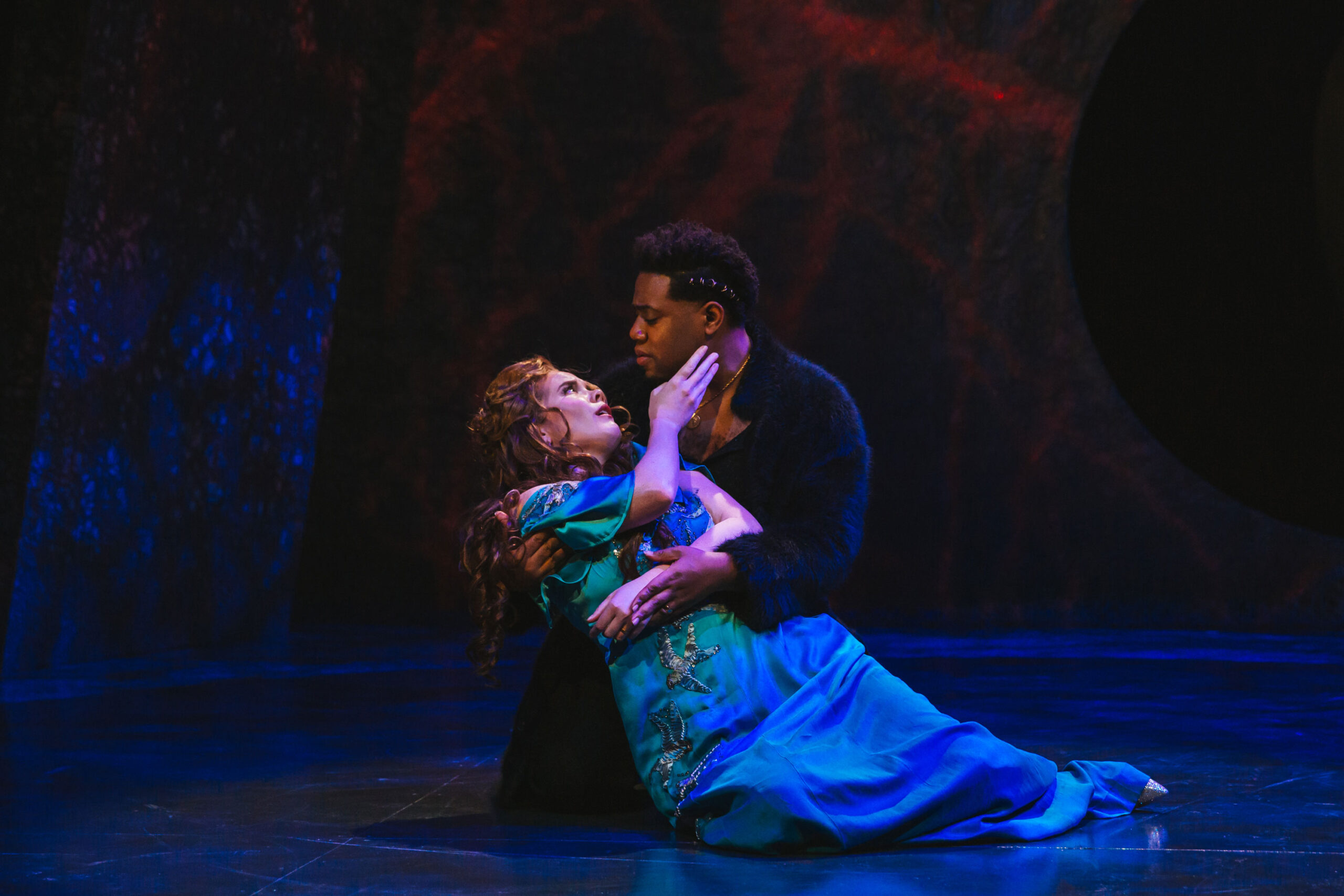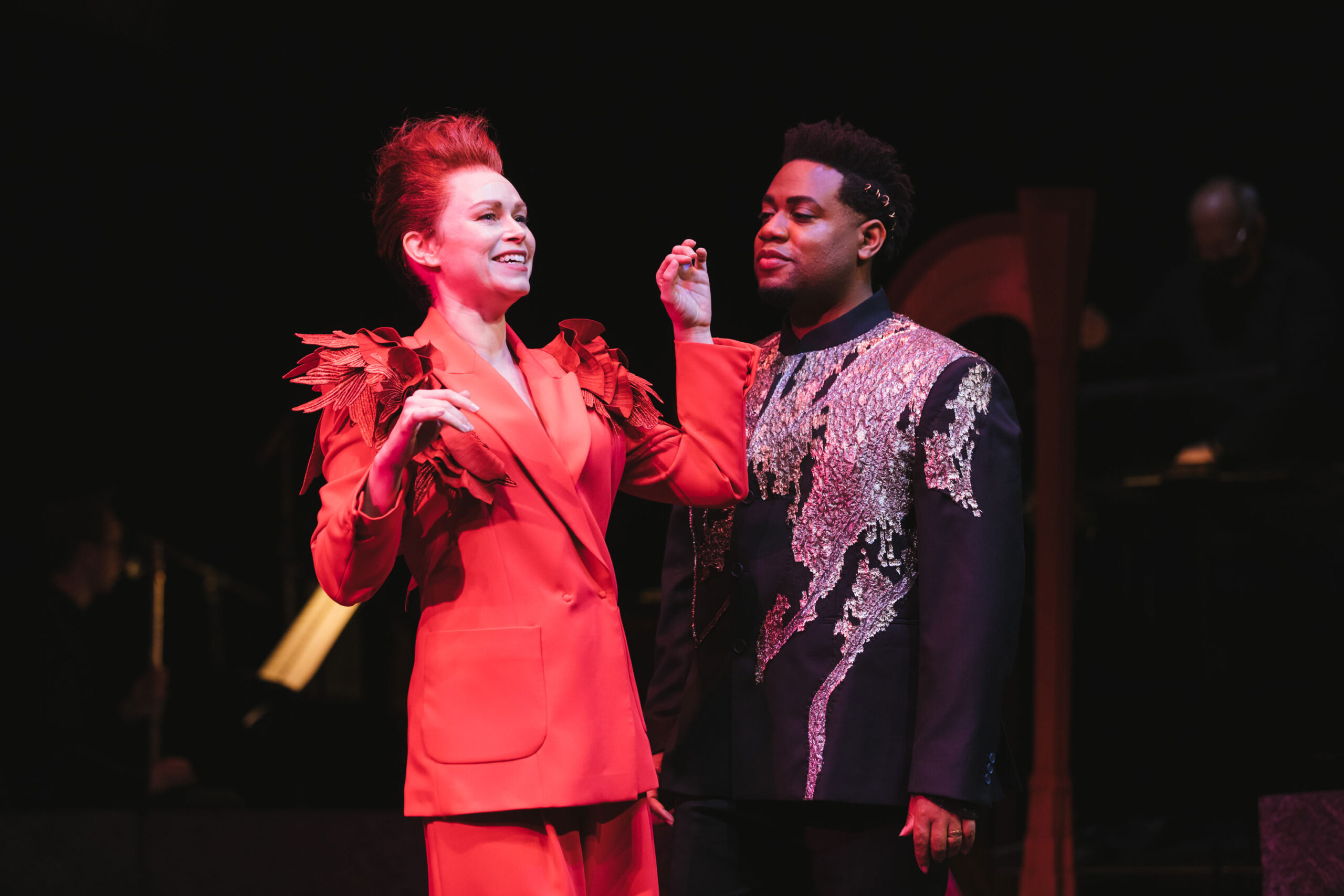During the entire epidemic, Seattle Opera continued to create, primarily through videos showing it in survival mode: a monochrome, monaural reduction of Don Giovanni; Jonathan Dove’s “airport opera” Flight lip-synced in a deserted local aeronautical museum; (taped solo recitals, panel discussions, previews, post-mortems, all with the numbingly dutiful feel of visits to a hospice ward where an old friend lay, condition stabilized but not auspicious.
The return to live performance in October 2021 with a miniaturized Bohème in an underpopulated, cavernous McCaw Hall wasn’t much more promising, so expectations were not high on the opening night of a similarly trimmed-down version of Gluck’s first version of Orfeo ed Euridice for 1762 Vienna, performed in an 150-bleacher seat black box (grandly titled for the occasion the Tagny Jones Theater) wedged into the atrium of the Opera’s administration area.

The ”action” begins long before the music starts. The tiny orchestra is already on stage, penned like sheep in a fold to one side of the tiny playing area Behind and over them, like the interior of a nautilus shell, lies a projection of the night sky, rendering in the chalk white and deep navy of an engineer’s blueprint a Rococo map of the constellations and the astrologic Houses of the Zodiac. To the rear, where the sky meets the horizon, an enigmatic circle opens on a void. The air throbs with muffled vibrations, as if a great engine is idling somewhere near.
When the music begins, the calm sky liquefies into tears of rain on a foggy window.as Robed figures bring a veiled figure on a catafalque to center stage, and the immemorial story of the demigod of music journeys to Hades to recover his last love.

Ranieri de’ Calzabigi’s libretto includes only the most salient events of the Orpheus legend: Euridice’s death from snakebite on her wedding day, Orpheus’ prayer to the goddess of love to be allowed to seek her among the dead, his victory over the furies who try to drive him back, and the ultimate failure of his quest.
The scenario is simplified and concentrated even more in the version of the drama devised by director Chia Patiño and music director Stephen Stubbs. There’s nothing airy or sentimental about their goddess of love (Sharleen Joynt and Deanna Breiwicki played Amore in the two casts). She’s a blunt earthy figure, impatient with Orfeo’s unwillingness to accept the facts of life and death.
The approach to Euridice, whose character is usually left ill-defined and ineffectual, is equally direct. Both as happy wraith and increasingly bewildered and angry spirit being dragged back without explanation into the pain and confusion of earthly life, Ariana Wehr and Shelley Traverse are down-to-earth women who refuse to be manipulated by another’s will.
In the language of Greek tragedy, the Euridice is a worthy antagonist to Orfeo’s painfully familiar protagonist: a man who thinks his divine gift of song gives him superhuman rights over the destiny of others. Countertenors Christopher Ainslie and Keymon W. Murrah are both gifted powerful singers,who achieve unusual poignancy in their roles due to encountering forceful resistance to their demands for blind obedience.

Only once do Patiño and Stubbs “intervene” in the time-honored rendition of the ancient tale. Instead of the compulsory lieto fine (literally “happy ending”) of opera seria, they end the drama with the sound of flute and harp sounding the Dance of the Blessed Spirits (traditionally the high point of the extensive ballet sequences of Orfeo’s second act scene set in the Elysian Fields). Orfeo is left to return to . . . to whatever remains to him, beyond the void behind the stage.
In this production, nearly everything contributes to a single unbroken dramatic curve. There are occasional moments that break the spell: the first act “flash-back” to happier days, in which the lovers tango; a touch of drag-queen make-up on a dancer; above all in moments when a singer loses motivation and falls into the kind of stylized gesturing and wandering about the stage which is opera’s special contribution to the art of bad acting.
But these moments pass and are forgotten within the smooth unfurling and grave momentum of the production. This is by far the most modestly produced Orfeo I have ever seen. I is also by far the most moving. I hope to see the same collaborators apply their gifts and common sense to Seattle Opra productions in the future.
I also hope, though I fear vainly, that this staging will lead to broader appreciation of the remarkable gifts of Stephen Stubbs. He has the misfortune of being that rarity, a modest artist: one who makes the difficult seem simple, and extraordinary achievement seem as natural as rain or sunlight.
Roger Downey
Orfeo ed Euridice. At Seattle Opera, January 12-30, 2022. Orfeo: Christopher Aislie/Key’mon W. Murrah; Amore: -Sharleen Joynt/Deanna Breiwick; Euridice: Ariana Wehr/Shelley Traverse. Director – Chia Patiño; Conductor – Stephen Stubbs; Stage designer: Carey Wong; Video and projections: S. Katy Tucker; Sound design: Robertson Witmer; Choreography: Donald Byrd; Costumes: Liesl Alice Gatcheco. Musicians of the Seattle Symphony Orchestra. Chorus master: John Keene
Above: Christopher Ainslie as Orpheus. Dancers: Jaclyn Wheatley, Vincent Michael Lopez, and Kaitlyn Nguyen. Photo by Bill Mohn.